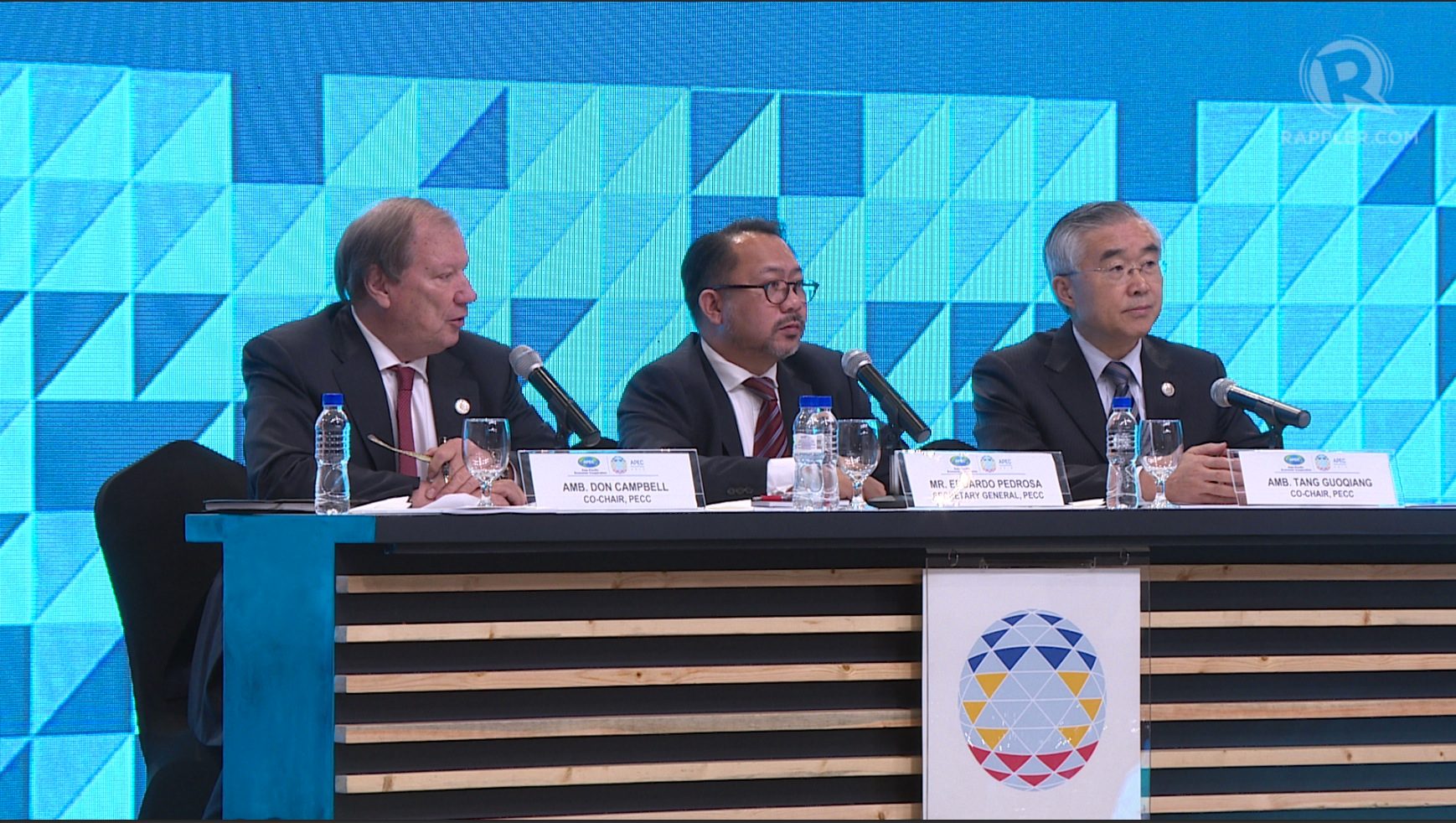SUMMARY
This is AI generated summarization, which may have errors. For context, always refer to the full article.

MANILA, Philippines – The Asia-Pacific region is expected to grow by 3.2% in 2015 – the slowest rate since the global financial crisis, a report published by the Pacific Economic Cooperation Council (PECC) showed on Monday, November 16.
“The State of the Region” report was released ahead of the Asia-Pacific Economic Cooperation (APEC) Summit on November 18 to 19 also showed that growth is expected to return to a “new normal” of around 3.4% to 3.5%, the Pacific Economic Cooperation Council (PECC) said.
Thus, PECC asked APEC leaders meeting here to focus their discussions on ways to ensure that more people are part of the region’s growth.
Weaker growth ahead
PECC’s secretary general and coordinator of the report Eduardo Pedrosa said in a press conference Monday that almost 40% of respondents to PECC’s annual survey expected weaker growth for the global economy over the next 12 months.
The 710 survey respondents representing different areas in the region cited slowdown in the Chinese economy; failure to implement structural reforms; a lack of political leadership; a slowdown in the US economy; and a lack of adequate infrastructure as the top risks to growth. (READ: Instability in other regions to trigger investments flows to Asia Pacific)
The PECC report also showed that the Philippine economy is projected to grow by 6% this year, 6.3% in 2015; and 6.5% annually from 2017 to 2020.
Trade liberalization
“APEC’s agenda has moved on from a focus on trade liberalization to addressing a broader set of issues since the Philippines last hosted the meetings in 1996,” Pedrosa said. (READ: APEC 2015: Trans-Pacific Partnership to transform Asia)
“While continuing with the implementation of the vision APEC set out when it started, there needs to be a much greater focus on ensuring that future growth is more inclusive,” he added.
The top areas identified by the survey for promoting inclusive growth were the provision of public education; reducing corruption; providing support to micro, small, and medium enterprises (MSMEs); quality of health services; and social safety nets including healthcare, unemployment, and pensions reforms.
These priorities for inclusive growth were reflected in the issues that stakeholders in the Asia-Pacific cooperation identified as the top priorities for leaders’ discussion:
- Progress toward the Bogor Goals and the Free Trade Area of the Asia-Pacific (FTAAP)
- The APEC Growth Strategy
- SME participation in regional and global markets
- Corruption, climate change cooperation, and disaster resilience
“APEC set out a bold goal for achieving free and open trade and investment in the region 21 years ago. Since then the idea of a Free Trade Area of the Asia-Pacific has become a long-term vision for the region,” Ambassador Tang Guoqiang, PECC co-chair, said.
“The conclusion of the negotiations for the Trans-Pacific Partnership (TPP) has completed one part of the jigsaw puzzle of a more deeply integrated region. The challenge now is how to bring all of the region’s economies into a single trade system,” Ambassador Don Campbell, Co-chair of PECC, said.
PECC said that while the TPP, if ratified, would generate an additional $225 billion to the world economy by 2025, and the Regional Comprehensive Economic Partnership is estimated to generate $645 billion, the FTAAP would add about $2.5 trillion.
At the same time, there are a number of initiatives such as the Asian Infrastructure Investment Bank to help provide additional funding for infrastructure to boost growth.
But PECC said that even these are not enough to account for the drop in income growth that has occurred since the global financial crisis.
“While the regional economy has remained resilient after the global financial crisis, it has come mainly through extraordinary stimulus. The region needs to shift gears and begin implementing structural reforms if it is to continue the success it has had in reducing poverty and promoting growth,” Pedrosa said.
“As APEC continues on its path toward regional economic integration, it needs to implement reforms that provides opportunities for all sectors of society,” he added. – Rappler.com
Add a comment
How does this make you feel?





There are no comments yet. Add your comment to start the conversation.